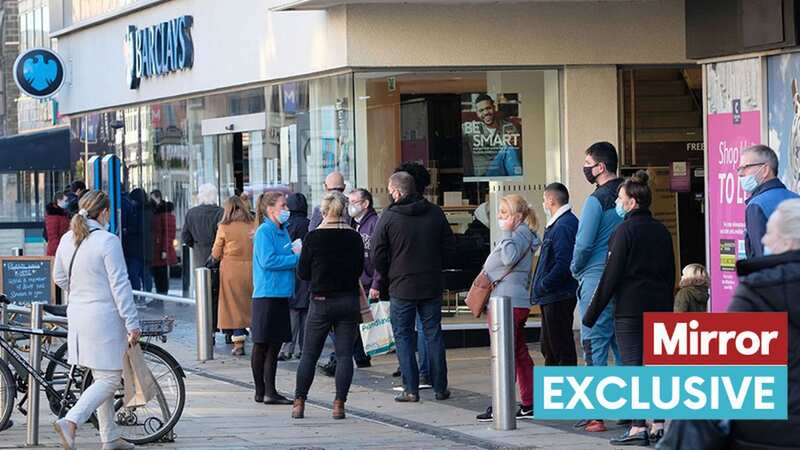

High Street banks are shutting down almost 460 branches this year - leaving dozens more communities with nowhere to go for local financial services.
A total of 397 branches have closed or will close in England in 2023, along with 37 in Wales, 20 in Scotland, and five in Northern Ireland.
But in some areas, the latest closures will leave high streets without any existing banks, meaning customers will have to go online or travel to other locations to access financial services.
The closures will leave 109 communities in England without a bank, plus 16 in Wales, five in Scotland, and one in Northern Ireland.
You can see if banks are closing or have closed in your area this year using the Mirror’s interactive map below:
 Bank of Dave self-made millionaire giving away money to 'keep kids working hard'
Bank of Dave self-made millionaire giving away money to 'keep kids working hard'
It comes as Age UK warns many older or vulnerable people are struggling with online banking.
The charity's research found that four in 10 older people (39%) with a bank account in Britain - equivalent to more than four million people - are not managing their money online and could be at risk of financial exclusion.
Age UK has now called for more banking hubs to be opened in the UK in locations where all banks have closed.
These are spaces shared by several high-street lenders featuring counter services and visits from community bankers from the major banks.
More than 50 banking hubs have been announced, but only four have opened so far.
 Barclays is closing the most branches with 122 set to go (Bloomberg via Getty Images)
Barclays is closing the most branches with 122 set to go (Bloomberg via Getty Images)Caroline Abrahams, charity director at Age UK, said: "We need to face up to the fact that huge numbers of older people, the oldest old, especially, are not banking online.
"Even older people who do bank online often want the ability to talk to a bank employee in the flesh about some kind of transaction.
"A lack of face-to-face banking will only serve to further exclude the millions of people on a low income who have no or limited access to the internet."
Andrew Goodacre, CEO of Bira (the British Independent Retailers Association) said banks were closing at a much faster pace than the hubs were opening.
He said: "Small businesses want to remain accessible and available to their customers, and that means being able to accept cash.
 Big Four banks made £20billion in 9 months as households battled interest rates
Big Four banks made £20billion in 9 months as households battled interest rates
"As a result, Indie retailers need access to cash, customers need cash and so we need banks on the high street."
 HSBC is closing 114 branches this year (Bloomberg via Getty Images)
HSBC is closing 114 branches this year (Bloomberg via Getty Images)Branch closures are driven by factors including the rise of online banking, the increasing popularity of mobile banking, and the cost of running branches.
Of the bank closures that have been announced or have already taken place this year, Barclays have overseen the most closures, with 122 branches lost to the high street.
That is followed by HSBC (114), Nat West (106), Lloyds (62), and Halifax (32).
Barclays is closing or has closed the most branches in areas that have no other physical banking services (45) followed by Lloyds (34) and then Nat West (24).
Barclays says it maintains an in-person presence in over 200 locations “where there is no longer enough demand to support a branch” through the Barclays Local network, based in libraries, town halls, mobile vans, and “banking pods”.
A spokesperson said: “As visits to branches continue to fall, we need to adapt to provide the best service for all our customers.”
A spokesperson for Lloyds Banking Group - which owns Halifax as well as Lloyds Bank and several other financial firms - said increasing demand for online banking meant it needed to continue to develop “services our customers want to use”.
Lloyds said its branches would “continue to be an option for our customers alongside our telephone services, mobile app and online bank”.
A NatWest spokesperson added: “We understand and recognise that digital solutions aren’t right for everyone or every situation, and that when we close branches we have to make sure that no one is left behind.
“We take our responsibility seriously to support the people who face challenges in moving online, so we are investing to provide them with support and alternatives that work for them.”